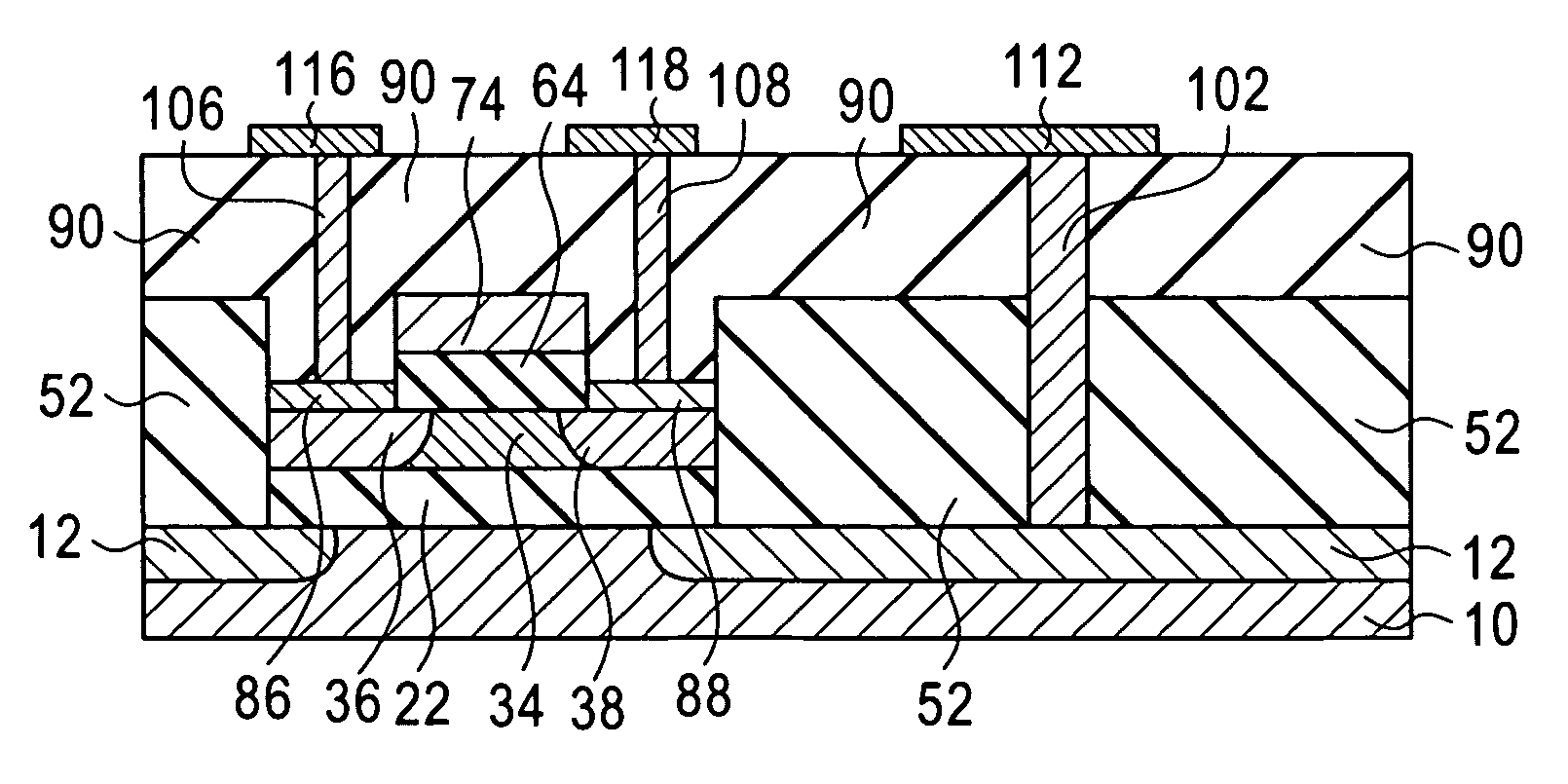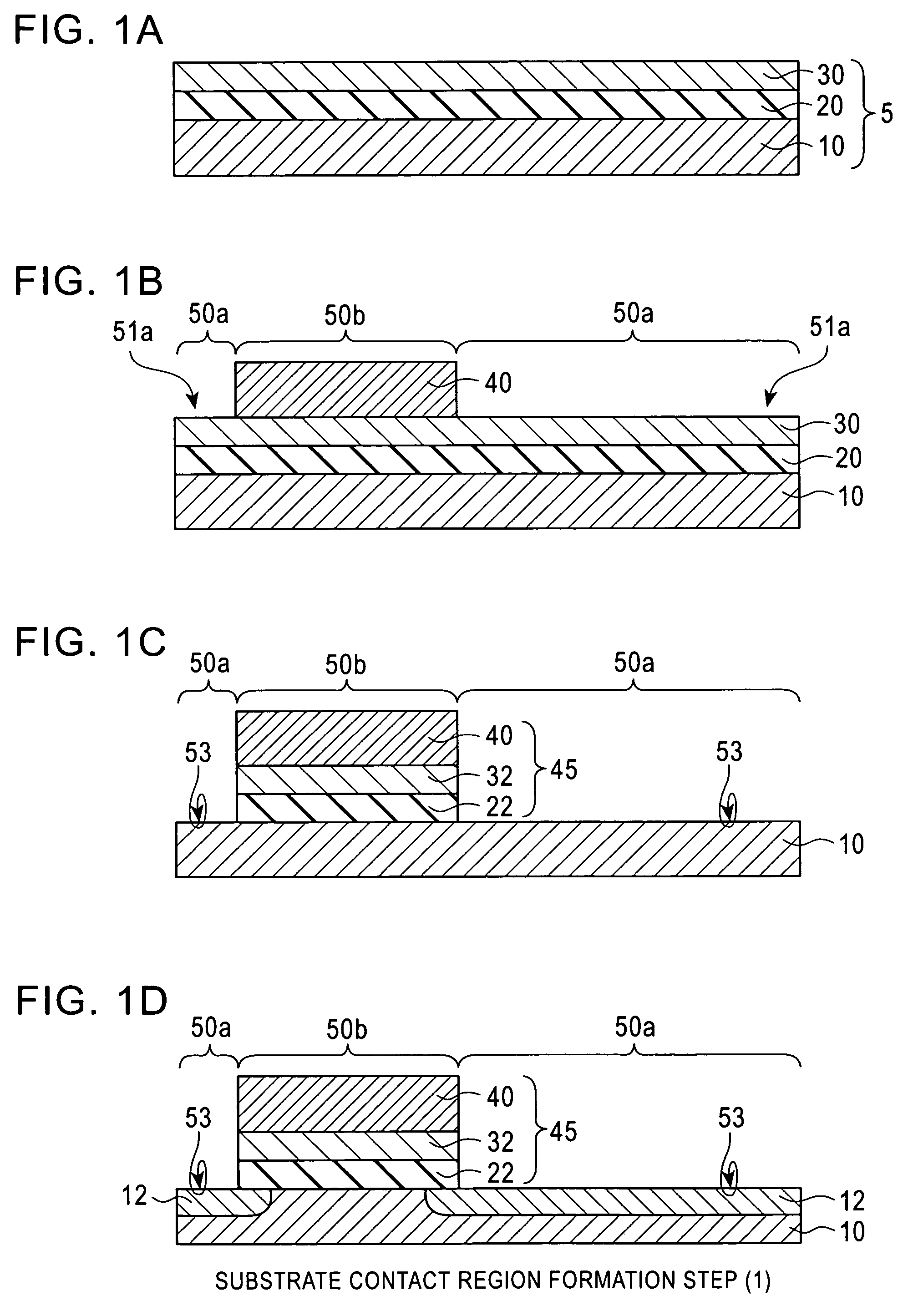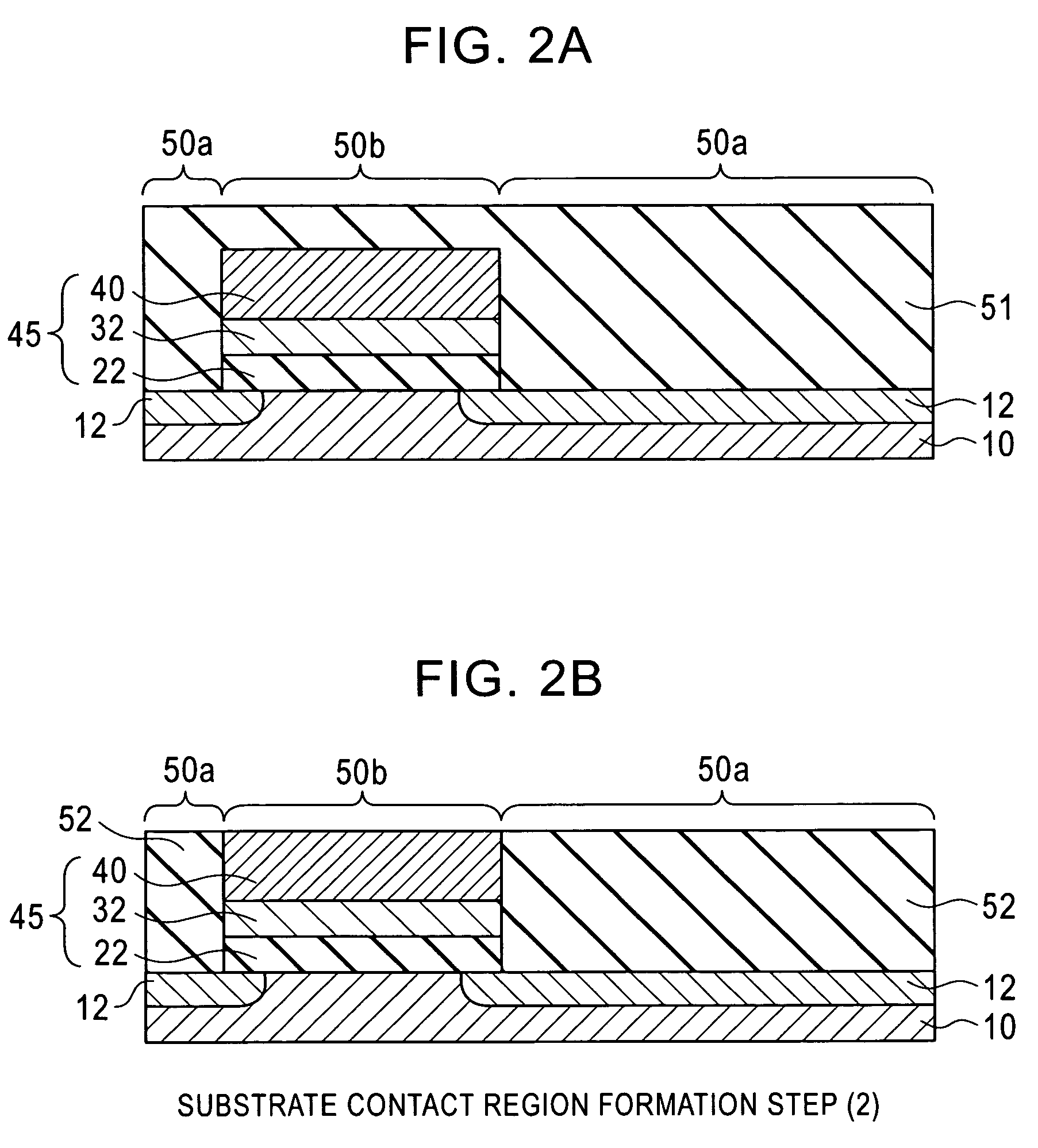Semiconductor device fabrication method
a technology of semiconductor devices and fabrication methods, applied in semiconductor devices, semiconductor/solid-state device details, electrical apparatus, etc., can solve the problems of fluctuating characteristics of soi-cmos devices, and deteriorating performance of analog circuits
- Summary
- Abstract
- Description
- Claims
- Application Information
AI Technical Summary
Benefits of technology
Problems solved by technology
Method used
Image
Examples
Embodiment Construction
[0035]An embodiment of a semiconductor device fabrication method according to the invention will be described with reference to FIGS. 1A to 1D. It should be noted that the constitution and positional relationships of the embodiment are merely shown schematically to an extent necessary for an understanding of the invention. Further, although a preferred embodiment of the invention will be described hereinbelow, the composition (materials) of each constitution and the numerical conditions thereof and so forth are only preferred examples. Therefore, the invention is in no way limited to or by the following embodiment.
[0036]The semiconductor device fabrication method of the embodiment of the invention includes three steps, which are a substrate contact region formation step, a MOSFET formation step, and a contact formation step, as described hereinbelow. Each step includes a plurality of sub-steps.
[0037]The substrate contact region formation step will now be described with reference to ...
PUM
 Login to View More
Login to View More Abstract
Description
Claims
Application Information
 Login to View More
Login to View More - R&D
- Intellectual Property
- Life Sciences
- Materials
- Tech Scout
- Unparalleled Data Quality
- Higher Quality Content
- 60% Fewer Hallucinations
Browse by: Latest US Patents, China's latest patents, Technical Efficacy Thesaurus, Application Domain, Technology Topic, Popular Technical Reports.
© 2025 PatSnap. All rights reserved.Legal|Privacy policy|Modern Slavery Act Transparency Statement|Sitemap|About US| Contact US: help@patsnap.com



